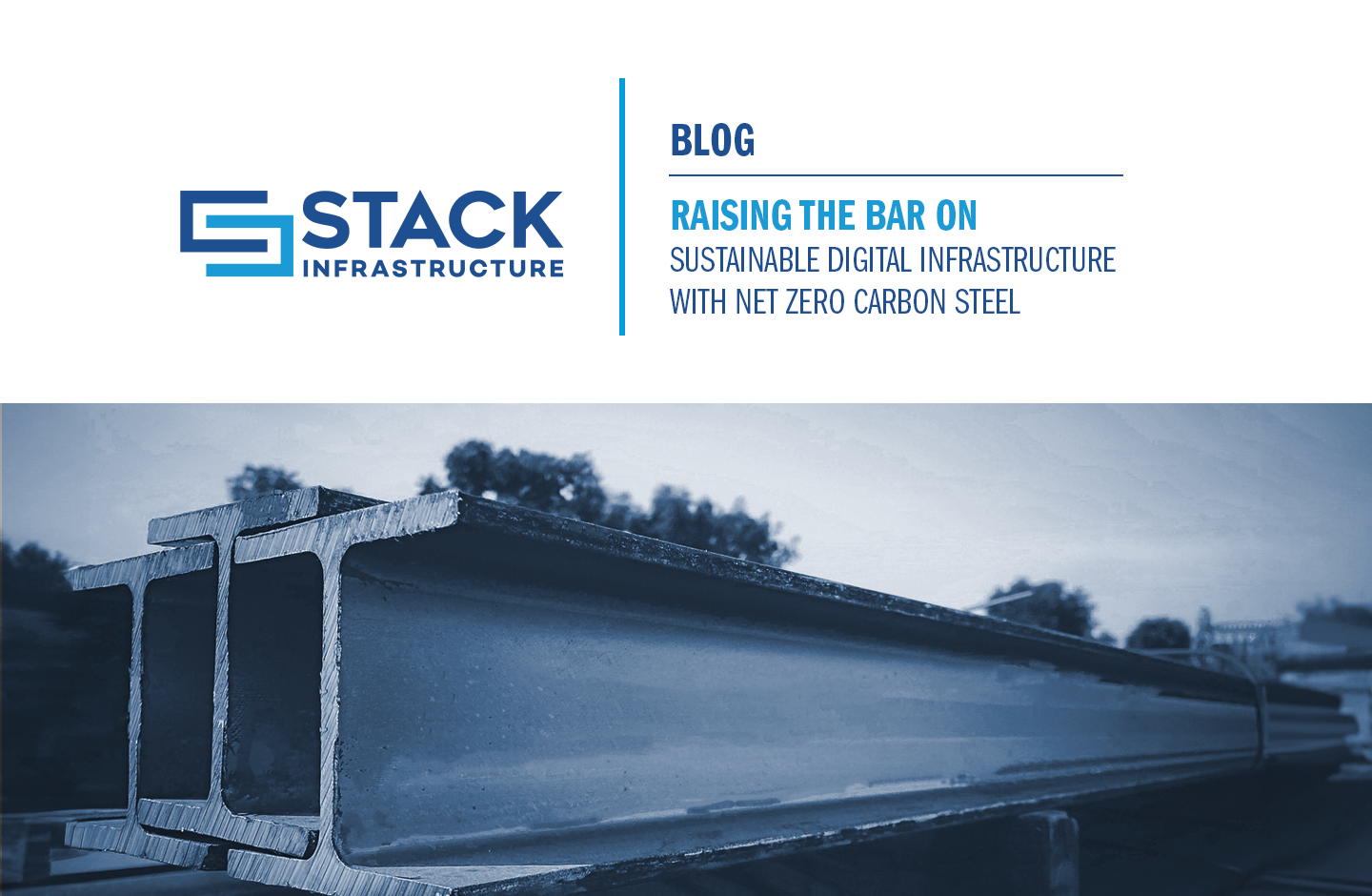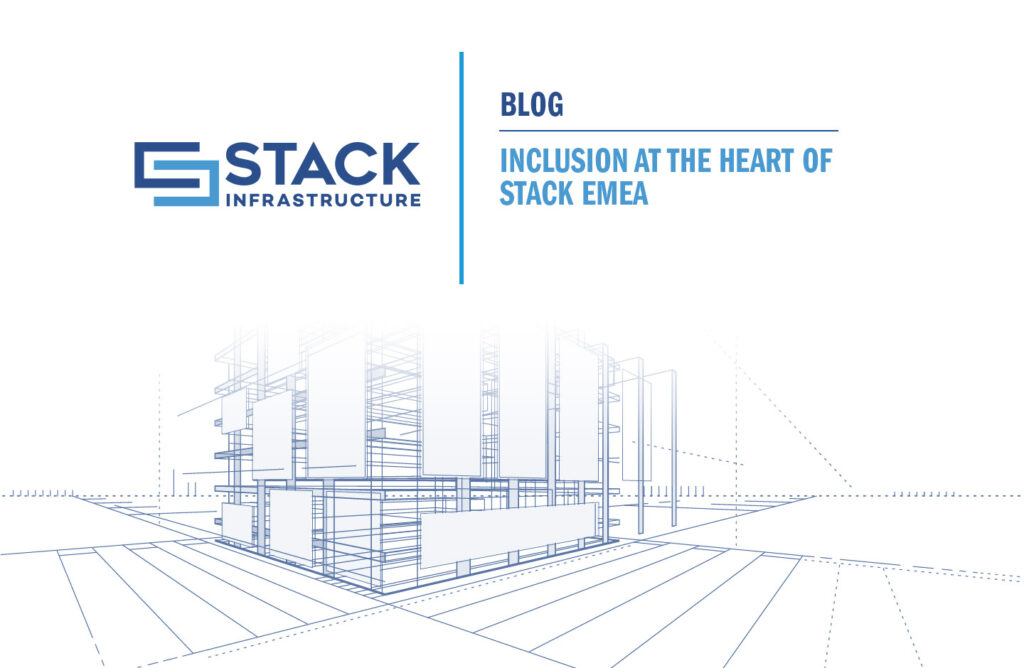Raising the Bar on Sustainable Digital Infrastructure with Net Zero Carbon Steel

Data center development is surging to meet the needs of an increasingly digital world, enabling the global economy and powering everyday life. As such, solutions to decarbonize the highest impact elements of construction are needed now more than ever to meet the sustainability targets of corporate stakeholders and global economies.
Steel, a foundational element in all hyperscale data centers, presents an ideal opportunity to reduce embodied carbon associated with construction activity. Through cutting-edge innovations, STACK has undertaken strategic initiatives to utilize lower-carbon steel and has implemented net zero carbon steel in a now-active data center.
The Case for Smarter Steel
As global steel demand is expected to increase up to 30% by 2050, the opportunity to advance steel production is essential for sustainable development. With steel as a core material in STACK’s hyperscale data center campuses, we are well-positioned to lead emissions reductions through smarter material choices and innovative construction strategies.
Our commitment to environmental stewardship includes a net zero emissions goal, guided by near-term, science-based targets that chart a clear path toward meaningful emissions reduction. While operating our global data center portfolio on 100% renewable energy has already made an impact, decarbonizing construction, particularly steel, remains an essential element in STACK’s sustainability strategy.
Net Zero Carbon Steel Pilot in Northern Virginia
At one of our data center campuses in Northern Virginia, we piloted the use of net zero carbon steel for the wide flange components of the structural steel assembly. In collaboration with the project’s steel fabricator, SteelFab, and our partners at the steel sourcing mill, we developed a strategy to address the cradle-to-site carbon emissions associated with creating the wide flange steel.
As one of the first efforts of its kind in our industry, the initiative underscores STACK’s leadership in advancing sustainability within digital infrastructure. This integrated approach of combining emissions reduction and insetting was not an off-the-shelf solution. It required early alignment, clearly defined STACK-led project expectations, coordinated collaboration across teams, and a shared commitment to driving environmental responsibility across the value chain.
The process included:
- Recycled materials: The iron ore used contained 93% recycled scrap metal, significantly reducing emissions associated with raw material extraction.
- Cleaner production: The steel was manufactured using Electric Arc Furnace production, a cleaner alternative to Oxygen Blast Furnace production.
- Renewable energy: Renewable Energy Certificates (RECs) were purchased by the steel mill and fabricator to match the total electricity used within the steel manufacturing and fabrication processes.
- Carbon offsets: The carbon emissions from transporting the steel from the mill and then to the STACK data center site were carefully calculated. To mitigate the associated impact, SteelFab procured verified carbon offsets. Additional carbon offsets were also secured to cover non-electricity related emissions at both the mill and fabrication sites, including those from onsite gas use and refrigerants in manufacturing equipment.
- Documentation approach: Cradle-to-site emissions for the wide flange steel were meticulously tracked to ensure comprehensive accounting across all stages. To determine the appropriate volume of RECs and carbon offsets, the project team calculated the carbon impact of each phase of the steel’s lifecycle, including raw material extraction, manufacturing, fabrication, and transportation.
Key Outcomes
Ultimately, this effort resulted in a 100% reduction in the embodied carbon emissions associated with the project’s wide flange steel and an 83% reduction in the embodied carbon of the structural steel system overall.
The initiative delivered both a sustainable outcome and established a scalable model for how STACK can leverage market-based mechanisms such as RECs and carbon offsets to address hard-to-abate value chain emissions. The insights gained from this pilot process are already informing STACK’s approach to mitigating the carbon footprint of steel across future data center developments, particularly in the near term as manufacturing innovations continue to mature. We’ve found that the following key factors can help to scale this approach:
- Upfront alignment on decarbonization objectives: Defining expectations early ensures that every stakeholder is engaged and working toward a shared goal.
- Collaboration across the supply chain: SteelFab played a pivotal role in bridging STACK’s sustainability objectives into actionable supplier execution, offering creativity and flexibility within a fabrication process that initially lacked a standardized solution.
- Customized documentation: Given the uniqueness of the project, STACK and SteelFab closely collaborated to develop a customized documentation approach that validated the impact and enabled accurate tracking and accounting of the product’s emissions. This set a precedent in a space where a standard project-specific Environmental Product Declaration (EPD) did not yet exist.
What Comes Next
Looking ahead, we see an opportunity to streamline the procurement of net zero carbon materials by enhancing the tracking and application of market-based decarbonization mechanisms across STACK’s data center campus developments. We aim to partner with industry and project stakeholders to create project-specific EPDs to enable more precise measurement and verification of the emissions reductions achieved through these types of insetting strategies.
Steel represents just one component of STACK’s broader decarbonization strategy. We’re actively piloting next-generation materials to elevate the environmental performance of our data centers and advancing cleaner procurement practices that benefit not just STACK, but also our clients and industry partners seeking more sustainable infrastructure.
By Katie Bachman, VP Business Operations
August 20, 2025




